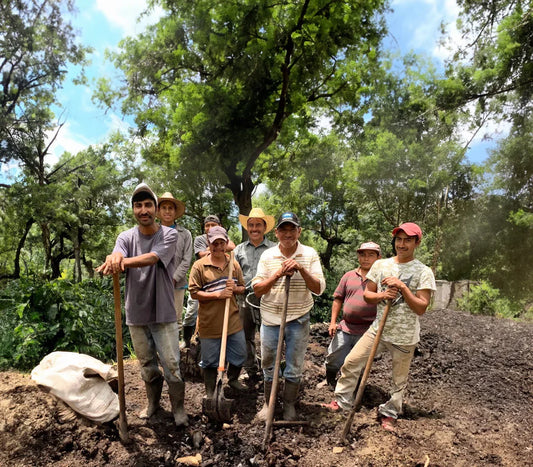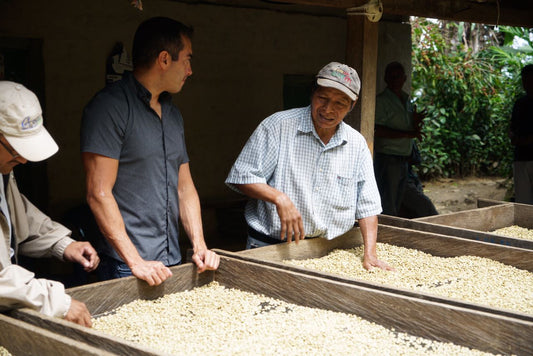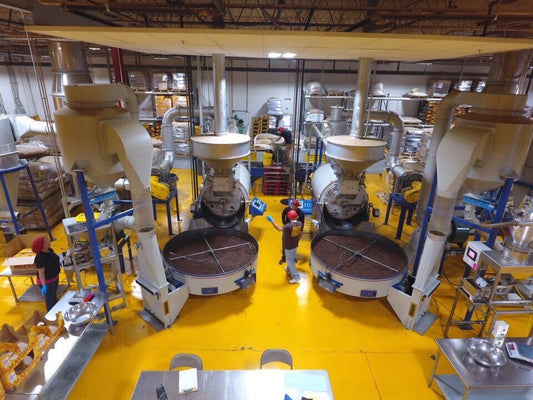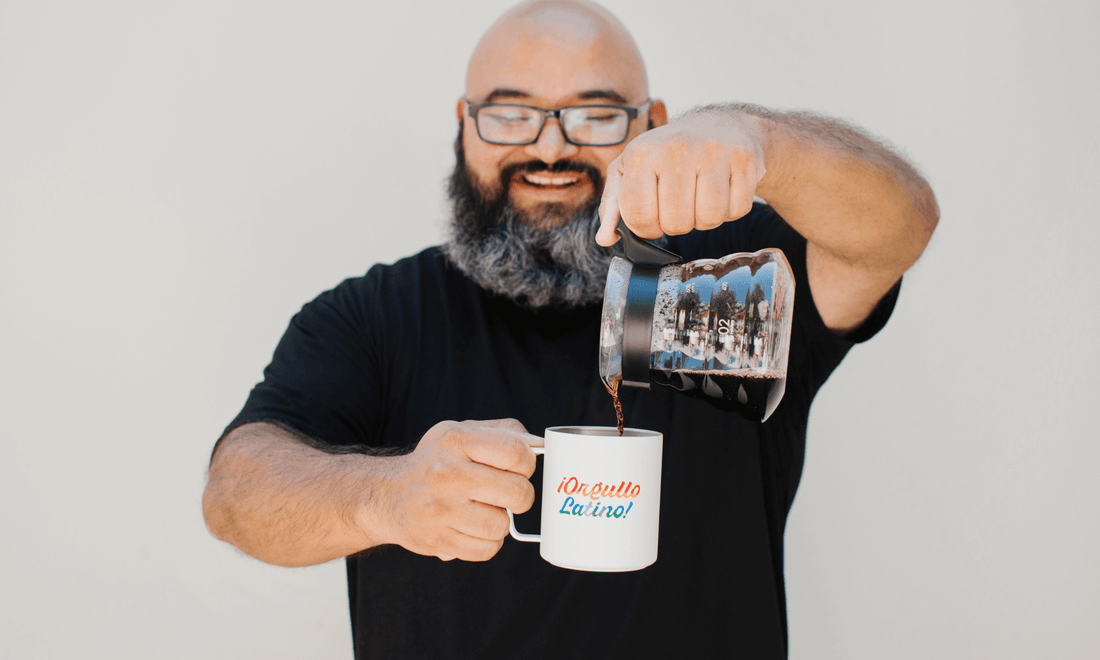
¿Cómo puedo preparar un café tan bueno como el de una cafetería?
Se han escrito muchos artículos sobre cómo preparar la mejor taza de café y algunas personas incluso escriben libros enteros sobre el tema. Cuando piensas en un ritual matutino que parece tan simple y que tiene libros dedicados a él, sabes que es un asunto serio. ¿Quién tiene tiempo para leer eso? Tú no, porque estás aquí conmigo y yo estoy aquí para ayudarte en tu viaje de amor por el café.
Hay tres variables principales que intervienen en la preparación de un café excelente. Comprender y controlar estas variables cambiará tu experiencia de consumo de café para siempre.
“Dale a alguien una buena taza de café y le darás cafeína para un día. Enséñale a preparar una buena taza de café y le darás cafeína para toda la vida”. Yo, hace un momento, con la ayuda de Lao Tzu
Los conceptos básicos de la preparación del café
Preparar un buen café es cuestión de entender la importancia de cada parte del proceso. Preparar un café es el acto de combinar agua caliente y café molido para extraer el sabor. La explicación es sencilla, pero la forma en que elijas controlar y combinar el agua caliente y el café molido determinará la exquisitez de esa taza.
Las variables
- Agua: Calidad y Temperatura
- Dosis: Proporción de café y agua a utilizar
- Tamaño de la molienda: Tiempo de contacto del agua y el café
Para preparar un café delicioso, necesita una fuente de agua limpia, una temperatura de agua adecuada, suficiente agua, suficiente café molido para el dispositivo de preparación elegido y tiempo suficiente para que el agua pase a través del café.

Controlar las variables
Calidad del agua: una taza de café está compuesta por más del 97 % de agua, por lo que el agua es muy importante. Necesita agua limpia y filtrada para obtener los mejores resultados. El agua clara y sin olores es un buen punto de partida, pero el uso de diferentes tipos de agua limpia puede dar lugar a resultados finales variables. El agua del grifo, el agua del grifo filtrada, el agua filtrada por ósmosis inversa y el agua embotellada le proporcionarán una experiencia diferente. Encuentre la mejor opción para usted y cíñase a ella.
Personalmente, utilizo agua de ósmosis inversa. En algunos casos he utilizado agua de manantial, pero prefiero utilizar siempre la misma porque el agua de manantial varía en cuanto a los minerales presentes, lo que afectará a la taza final.
Temperatura del agua: El agua hierve a 212 grados Fahrenheit. Para obtener excelentes resultados y extraer los sabores que deseamos de una excelente taza de café, necesitamos una temperatura del agua que permita una buena extracción. Los mejores resultados se obtienen con temperaturas del agua que oscilan entre 195 ° F y 205 ° F.
La mayoría de las cafeteras tienen calderas que se encuentran en un rango de entre 190 ° F y 200 ° F. Si su dispositivo tiene la capacidad de controlar la temperatura, entonces debe saber que el agua más caliente extraerá más sabores que el agua a menor temperatura. Las personas que preparan café manualmente, como los métodos de vertido, a menudo cambian la temperatura del agua en las teteras con control de temperatura para obtener resultados diferentes.
Dosis: La proporción de café y agua
El café es tanto un arte como una ciencia, y las pequeñas variaciones en la proporción de café y agua pueden alterar drásticamente el sabor y la intensidad de la infusión. Medir la cantidad de café y agua que se utilizan al preparar el café es una práctica fundamental que puede influir en gran medida en la calidad de la taza final. La precisión en estas mediciones es crucial para lograr consistencia en cada infusión. Al medir tanto el café como el agua con cuidado, puede ajustar sus infusiones para que se adapten a las preferencias de sabor, lo que garantiza una taza que no sea ni demasiado débil (súper diluida) ni demasiado fuerte (agua extra oscura). Para obtener la mejor experiencia de café, recomiendo usar una báscula con la capacidad de pesar en gramos. Esta atención al detalle permite una experiencia de café más agradable y satisfactoria, ya que garantiza que cada taza ofrecerá el perfil de sabor deseado, ya sea una sensación audaz y robusta de Café Cubano, un equilibrio suave y con sabor a nuez de un Mayan Blend o una taza dulce y afrutada de Colombia Santa María. Si desea un enfoque más simple pero repetible, utilice una herramienta de medición consistente, como una cuchara o una cucharada, pero tenga en cuenta que la cantidad de café que cabe en una cucharada variará según el nivel de tueste (pero ese es otro artículo para más adelante, permanezca atento).
Para quienes trabajan en la industria del café, las mediciones precisas son vitales para ofrecer un producto consistente a los clientes, mantener la reputación de la marca y garantizar la lealtad del cliente. En resumen, medir la cantidad de café y agua que se utilizan para preparar el café no es solo una cuestión de precisión y calidad; es un compromiso para lograr una experiencia de café consistente y placentera. ¡Date un capricho!
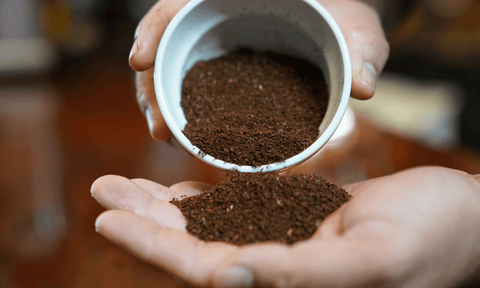
El papel del tamaño de molienda
El tamaño de los granos de café es un factor crucial que puede afectar significativamente la calidad y el sabor de la preparación del café. Los diferentes métodos de preparación requieren distintos tamaños de molienda para extraer los mejores sabores de los granos de café. Por ejemplo, una molienda gruesa es ideal para métodos que requieren más tiempo, como la preparación con prensa francesa, donde los granos de café se remojan en agua caliente. Por el contrario, una molienda fina es adecuada para las máquinas de espresso, donde se utiliza alta presión para extraer sabores en un corto período de tiempo (21-34 segundos).
El tamaño de la molienda también tiene un impacto significativo en el tiempo de preparación. Una molienda más gruesa requiere un tiempo de preparación más largo para extraer por completo los sabores, como cuando se prepara con una prensa francesa, que demora aproximadamente entre 4 y 5 minutos. Por el contrario, una preparación presurizada de un espresso utiliza una molienda más fina y se prepara en tan solo 21 a 34 segundos. Ajustar el tamaño de la molienda le permite afinar el sabor de su café, lo que garantiza que cada taza sea una experiencia agradable y armoniosa para sus papilas gustativas. En el mundo del café, es el tamaño de la molienda lo que puede transformar una simple bebida en una obra maestra sensorial. Ya sea que busque una infusión audaz y robusta o una taza delicada y matizada, comprender y ajustar el tamaño de la molienda es clave para lograr el perfil de sabor de café deseado.
Preparación de café por goteo con café molido fino
La influencia del tamaño de la molienda y del tiempo de preparación en el sabor del café preparado por goteo es significativa, ya que los diferentes tamaños de molienda producen resultados distintos. Al preparar café por goteo, los granos finos pueden obstruir fácilmente el filtro, lo que provoca un drenaje lento y posibles problemas de desbordamiento en la máquina de goteo. Esto puede resultar frustrante y puede dar lugar a una limpieza complicada. Usar un molido muy fino al preparar café por goteo suele ser un error, ya que puede dar como resultado una infusión demasiado amarga, dificultades en el control de la extracción, obstrucciones y sedimentos no deseados en la taza.
Preparación de café por goteo con café molido grueso
Elegir un molido grueso para preparar café de filtro puede tener varios resultados desfavorables. Las partículas de molido grandes suelen dar como resultado una extracción insuficiente del café, es decir, DÉBIL. Los granos más gruesos no permiten un tiempo de contacto suficiente con el agua caliente, lo que da como resultado una taza que parece agua sucia. El café puede incluso tener un sabor agrio o aguado debido a la extracción inadecuada de los sabores.
Preparación de café por goteo con el tamaño de molienda adecuado
Existe un punto ideal entre los extremos anteriores: el molido medio (para goteo). Ofrece un equilibrio entre el sabor y el tiempo de preparación que suele considerarse la opción ideal para preparar café por goteo. Con un molido de tamaño medio, se obtiene una preparación que no es ni demasiado rápida ni demasiado lenta, logrando un equilibrio armonioso en la extracción del sabor. Este tamaño de molido tiende a producir una taza de café equilibrada con un sabor satisfactorio, lo que la convierte en una excelente opción para disfrutar todos los días.
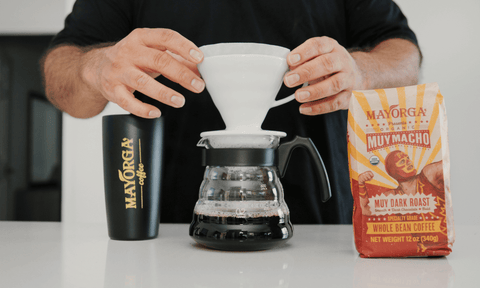
¡Ponlo todo junto y qué obtienes!
En su búsqueda por preparar un café tan bueno como el de su cafetería favorita, recuerde que el camino consiste en comprender y dominar los conceptos básicos de la preparación del café. Si bien hay una gran cantidad de consejos disponibles, controlar tres variables clave sin duda transformará su experiencia con el café para siempre: la calidad y la temperatura del agua, la proporción de café y agua y el tamaño de la molienda. Estas variables pueden parecer simples, pero tienen el poder de elevar su taza matutina de mundana a magnífica.
En lo que respecta al agua, opte por una fuente limpia y consistente que se adapte a su gusto. Tenga en cuenta la temperatura del agua, buscando el punto óptimo entre 195 °F y 205 °F para extraer los sabores que desea. La clave para la dosificación es la precisión: ya sea que esté usando una báscula o una herramienta de medición consistente, es esencial mantener una proporción constante de café y agua. Finalmente, el tamaño de la molienda es la nota final en esta sinfonía de café, y la molienda media surge como la opción ideal para preparar café de filtro, ya que ofrece un equilibrio armonioso de sabor y tiempo de preparación.
En la búsqueda de la excelencia en el café, recuerda que la constancia y la práctica son fundamentales. Encontrar el equilibrio adecuado entre las variables que aprendiste hoy garantizará que tu experiencia de preparación de café sea tan satisfactoria como la de tu cafetería local. ¡Brindemos por perfeccionar tu ritual matutino, una taza bien preparada a la vez!
Este artículo es a la vez factual y una pieza de opinión de Eduardo Choza.
Director de Café en Mayorga Coffee
